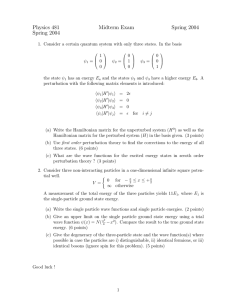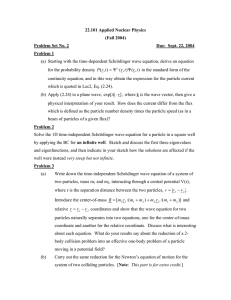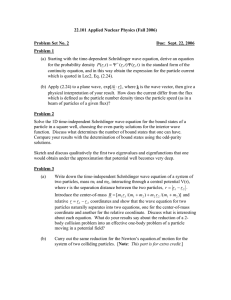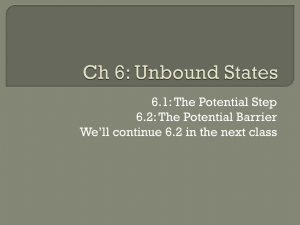Light The Speed of Light
advertisement
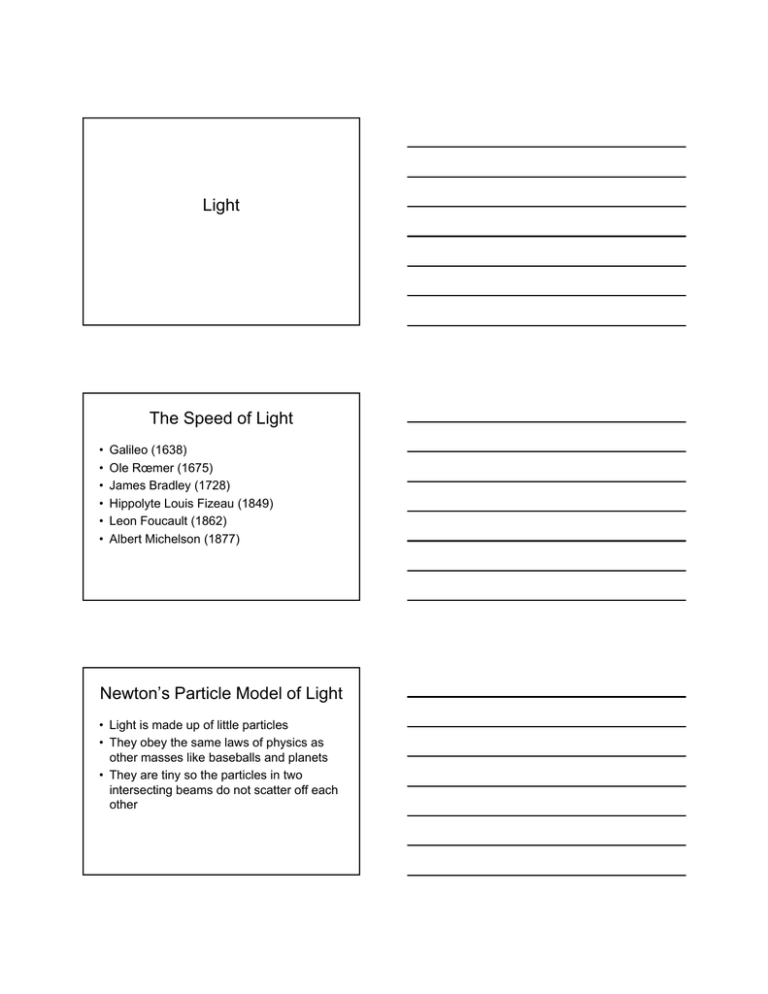
Light The Speed of Light • • • • • • Galileo (1638) Ole Rœmer (1675) James Bradley (1728) Hippolyte Louis Fizeau (1849) Leon Foucault (1862) Albert Michelson (1877) Newton’s Particle Model of Light • Light is made up of little particles • They obey the same laws of physics as other masses like baseballs and planets • They are tiny so the particles in two intersecting beams do not scatter off each other Rectilinear Propagation • When a ball is thrown, it follows a parabolic path due to gravity • If the ball is thrown very fast, the path of the ball appears straight • Newton reasoned that light particles travel very fast and thus appear to travel in straight lines Reflection • Newton showed that, in an elastic collision (no energy loss) between a hard sphere and a hard surface, the angle of incidence equals the angle of reflection Dispersion • When white light passes through a glass prism, different wavelengths are refracted through different angles, generating a display of colors • Newton's particle model explained this by saying that each particle in the spectrum had a different mass • He suggested that the lower mass particles would get diverted more easily – red particles would have a higher mass than blue particles Refraction • Newton believed that water attracts approaching particles of light in much the same way that gravity attracts a rolling ball on an incline • As particles of light travel from one medium to another they encounter a net force at the boundary • This speeds up the particles of light • Pushing them to take a direction closer to the normal Problems with Particle Model • Partial Reflection/Refraction – Newton proposed that some particles hit the surface and get reflected and some particles hit the surface and get refracted – But how did the particle know whether to reflect or refract? – The explanation is insufficient • Diffraction – Newton argued that light does not travel around corners – Newton thought that the effect around a barrier was just particles colliding at the edges – In other words, diffraction cannot be explained by the particle model of light Huygens’ Wave Model of Light • Light is a wave • Huygens’ principle – Every point on a wave front can be considered as a point source of tiny secondary wavelets that spread out in front of the wave at the same speed as the wave. The surface envelope, makes the wave front. Rectilinear Propagation • Huygens thought of light rays as the direction of travel of the wave • Waves travel in straight lines (as does light) Reflection • It can be demonstrated using water waves that the angle of incidence is equal to the angle of reflection for waves Refraction • While passing from the air to water, a light ray deviates towards the normal • This is explained by proposing that the speed of light decreases in the heavier medium • According to Huygens, the speed of light in water is less than in air Partial Reflection/Refraction • When one varies the angle of incidence of a wave passing from one medium to another, part of the wave is reflected and part of it is refracted Diffraction • When a wave hits a barrier, it bends • When a wave passes through a narrow opening or slit, it bends • When light is incident on a narrow slit, it also bends and produces a visible pattern Two Slits • If a wave passes through two slits a pattern of constructive and destructive interference appears • This type of interference pattern also appears when light is incident on a pair of slits, thus confirming that light behaves as a wave commons.wikimedia.org voer.edu.vn Young’s Double-slit Experiment • The path difference is d sin • If the rays were in phase when passing through the slits, then the path length difference for constructive interference is an integer number of wavelengths • So… d sin n (For simplicity, we will use n=1) • We can also see that tan x L sin tan x • So, if L>>∆x, then sin L • For small angles • Substituting gives… x d L • The wave theory better fit the evidence • So light was considered to be a wave Photoelectric Effect • When light of a certain frequency shines on a metal surface, electrons are released from the metal • To dislodge an electron a certain amount of energy must be transferred to the electron Prediction of Wave Model • Waves carry energy • Energy from the light waves will build up and eventually dislodge an electron (or electrons) • Any frequency of light should work – Lower frequencies (which have less energy) should take longer to release electrons than higher frequencies Problem with Wave Model • Electrons are only released when light higher than a specific frequency is used • If the frequency is less than this threshold frequency, then no electrons will ever be released – The intensity of the light or the length of time that the light shines on the metal do not matter Prediction of Particle Model • Einstein proposed that light consists of packets call “photons” – (Einstein’s model is not the same as Newton’s) • The amount of energy that a photon has is fixed and depends on its frequency • Photons with enough energy knock the electrons out of the metal – If the photon does not have enough energy, nothing happens Wave/Particle • Young’s double-slit experiment provides strong evidence that light is a wave • The photoelectric effect provides strong evidence that light is a particle • So which model is correct? BOTH ARE! Wave Particle Duality • Our current understanding of light is that it behaves as both a wave and a particle – It is really both at the same time – It appears to be a wave when we do an experiment that requires it to be a wave – It appears to be a particle when we do an experiment that requires it to be a particle – It has also been shown that all particles can also act as waves

